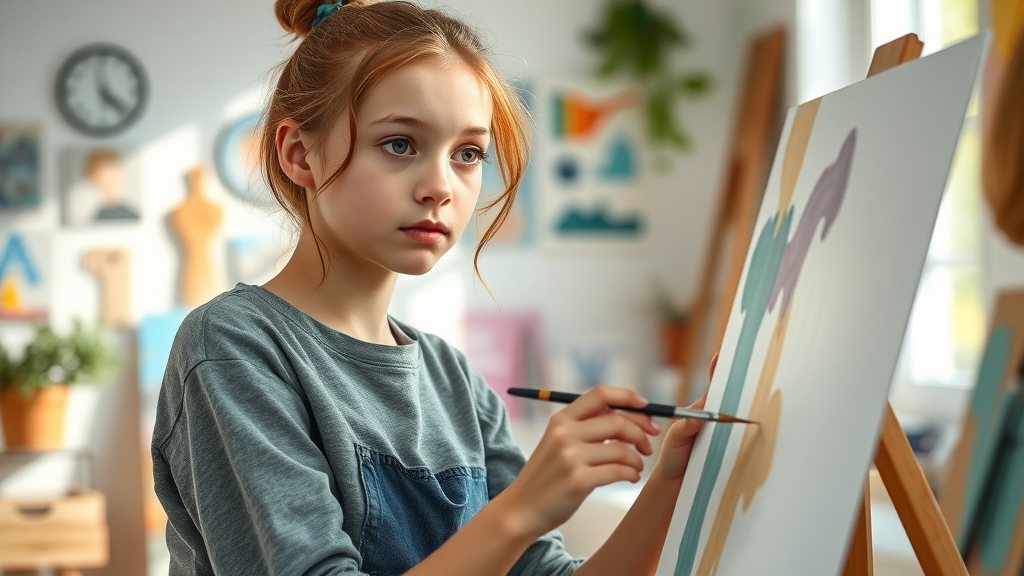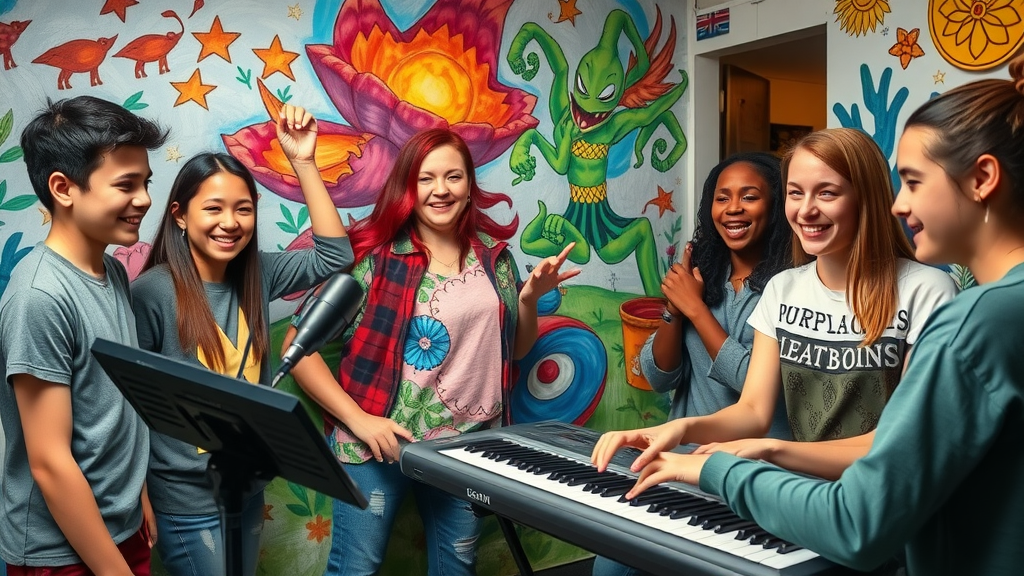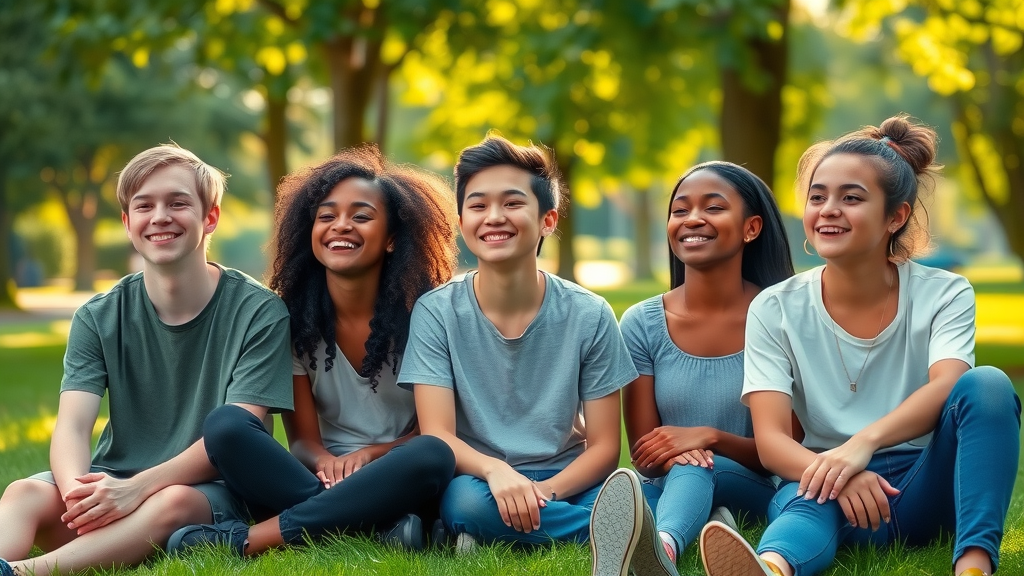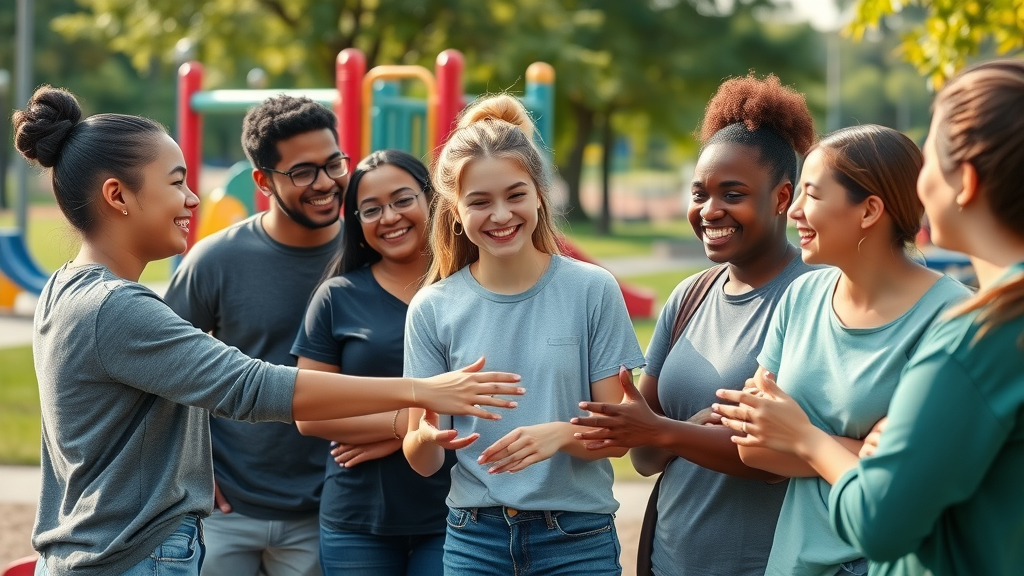Did you know that teens who participate in creative arts therapies are up to 70% more likely to report improved mood and lower anxiety? This remarkable fact highlights a growing movement that’s changing the face of mental health support for young adults. The fusion of music and art in healing teens isn’t just a trend—it’s a proven approach that gives troubled youth powerful tools to heal, express themselves, and reconnect with both their feelings and the world around them. In this educational and comprehensive guide, we’ll explore why art and music therapy are gaining recognition in therapeutic programs and how these modern methods are transforming lives every day.
Opening Insights: Startling Facts about Music and Art in Healing Teens
Music and art in healing teens has rapidly evolved from a side-note in mental health discussions to a cornerstone of youth therapy programs worldwide. Emerging research reveals that nearly one in five teens struggles with some form of mental health issue, from anxiety and depression to trauma and substance abuse. As traditional talk therapies sometimes fall short in reaching young people, creative arts like music and art therapy offer teens alternative paths to healing, expression, and connection. These methods not only allow for unique creative expression but also build life skills, coping skills, and emotional resilience in ways that clinical therapies may not always reach.
Today, therapists work alongside young adults in therapy sessions that integrate vibrant art projects and engaging music-making. Leading mental health professionals observe that adding music therapy or art therapy to a therapy program can lead to faster, more sustainable improvement in outlook and behavior. In fact, studies have shown that regular participation in creative arts therapy reduces teen depression and anxiety, increases school engagement, and even helps with relationship building. By putting real tools into the hands of troubled teens, art and music are opening new doors to healing.

An Eye-Opening Statistic: The Impact of Creative Arts on Teen Mental Health
According to a landmark study published in the Journal of Adolescent Health, teens involved in creative arts therapy report up to a 40% reduction in symptoms of depression and anxiety after just twelve weeks of regular sessions. This powerful statistic underscores the unique capacity of music and art therapy to reach where words often cannot. By engaging both the brain and emotions through the creative process, these therapies offer troubled young adults a safe space for self-exploration, risk-free expression, and personal growth. Leading art therapists and music therapists agree that making art or music enables teens to process pain, confront trauma, and discover new strengths—all while boosting self-esteem and critical life skills.
When compared with standard talk therapy alone, integrated programs that involve both art and music therapy significantly improve rates of continued participation, especially among adolescent girls and boys resistant to traditional counseling. Teens in creative arts therapy programs display a greater willingness to share, collaborate, and build confidence, developing skills that benefit their overall mental health and well-being. Whether it’s through drawing, painting, songwriting, or group drumming, the statistics confirm what professionals see every day: art and music in healing teens offer results that are both measurable and life-changing.
How Art Therapy and Music Therapy Lead to Tangible Results
Art therapy and music therapy are not simply passive, “feel-good” activities. They are structured and evidence-based approaches led by credentialed art therapists and music therapists who guide troubled teens through specialized exercises tailored to their emotional needs. Within these therapy programs, each session might involve expressive painting, collaborative mural creation, improvisational drumming, or even lyric analysis. Through these purposeful activities, young adults develop crucial coping skills, learn how to communicate difficult emotions, and begin to actively shape their own healing journeys.
Tangible results come in many forms: improved attendance at therapy sessions, reduced incidents of self-harm, sharper focus in school, stronger peer connections, and increased positive outlook. For teens dealing with mental health disorders, substance abuse, or feelings of isolation, art and music become therapeutic tools that help them process trauma and channel their energy constructively. Both research and real-life stories reveal the same conclusion—creative arts therapy, when included as part of a comprehensive mental health treatment plan, transforms troubled teens in profound and lasting ways.
What You'll Learn: The Power of Art and Music in Teen Therapy Programs
An overview of art and music therapy for troubled teens
How creative arts foster healing and improve mental health
Key benefits of integrating art and music into established therapy programs
Understanding Troubled Teens: The Mental Health Crisis Among Young Adults
Prevalence of Mental Health Issues in Adolescence
Adolescence is a complex time. With mounting social pressures, academic expectations, and the emotional rollercoaster of growing up, it’s no surprise that thousands of young adults struggle with mental health conditions. Recent data indicates that over 30% of teens experience symptoms of depression or anxiety before reaching adulthood. Other health disorders, like eating issues or substance abuse, can also emerge during these critical years. A large portion of troubled teens may not receive the help they need, due to social stigma, lack of awareness, or ineffective traditional approaches.
It is now widely recognized that early intervention—especially using creative, approachable methods like art and music therapy—can dramatically reduce the risk of mental health challenges becoming lifelong problems. Both art therapy and music therapy offer unique points of access for teens who struggle to open up verbally, creating an atmosphere of trust and acceptance. Mental health professionals increasingly recommend integrating creative arts into therapy programs to support the diverse needs of adolescent girls and boys alike.
Unique Challenges Faced By Troubled Teens and Young Adults
Troubled young adults confront challenges that go beyond academics or friendships. Many deal with trauma, bullying, ongoing family issues, or undiagnosed mental health disorders. These circumstances often leave teens feeling misunderstood, isolated, or unable to cope with life’s demands. The traditional talk-centered approaches sometimes fall short, especially for those who are non-verbal, culturally diverse, or simply resistant to direct questioning.
This is where creative arts shine. Participating in art and music gives teens a voice when words fail, allowing for meaningful breakthroughs in therapy sessions. By channeling their feelings into painting, drawing, songwriting, or drumming, teens develop emotional insight, build confidence, and find new hope. The journey is not always easy, but with dedicated art and music therapy programs, these young adults can gain the coping skills and resilience needed to overcome life’s unique hurdles.
"70% of mental health challenges emerge before age 25," according to the National Alliance on Mental Illness.
Exploring Art Therapy: How Art Therapy Heals Troubled Teens

The Principles and Practices of Art Therapy
Art therapy centers on the belief that creative expression can foster healing and mental well-being. Art therapists guide troubled teens through drawing, painting, collage, and sculpting—all tailored to individual needs. Unlike regular art classes, art therapy sessions use the creative process as a therapeutic tool, focusing on self-discovery rather than technical skill. Sessions often begin with a simple prompt, encouraging teens to “draw what you feel” or create images representing hope, fear, or overcoming obstacles.
In these safe spaces, teens practice introspection and non-verbal communication, learning to process and express emotions they might otherwise keep hidden. By externalizing feelings through artwork, young adults gain new perspectives and problem-solving abilities—a vital life skill for navigating mental health challenges. The consistent feedback of an art therapist helps teens identify emotional triggers and develop healthier coping mechanisms, ultimately promoting greater resilience and confidence.
Case Studies: Art Therapy Program Outcomes in Teen Mental Health
Consider the story of an adolescent girl struggling with severe anxiety and withdrawal following bullying at school. Her art therapist introduced collage and expressive drawing techniques, helping her translate overwhelming feelings into visual art. Over several weeks, her school attendance and engagement improved dramatically; she began participating in group projects and used her artwork as a bridge to discuss deeper issues with parents and peers. Similar case studies reveal that art therapy can boost self-esteem, emotional regulation, and trust, providing a crucial lifeline for troubled teens.
Researchers have documented that art therapy activities—like working on a mural or collaborating on a sculpture—improve a teen’s ability to build resilience, manage anger, and process trauma. These benefits extend beyond the art therapy studio, as many young adults carry their new-found skills of self-expression and problem-solving into their social, academic, and family lives. No matter the medium, the result is the same: greater confidence, better coping skills, and a sense of pride in creative accomplishment.
Benefits: self-expression, emotional regulation, building resilience
The Influence of Music Therapy: Using Music Therapy to Support Mental Health in Teens
Music Therapy Program Structures and Techniques
Music therapy programs go far beyond simple listening exercises. Music therapists use a variety of structured interventions: songwriting, instrument improvisation, guided listening, and music-facilitated group discussion. Music therapy sessions might start with teens picking their favorite song and discussing its meaning, followed by rhythmic drumming, or even composing original lyrics to express challenging feelings.
Crucially, music therapy programs adapt to each teen’s interests and strengths, making music a highly accessible avenue for therapeutic engagement. These sessions are designed not only to reduce anxiety and lift mood, but also to develop vital life skills like communication, teamwork, and self-discipline. As the therapist guides each session, teens safely explore their emotions and practice new coping mechanisms—learning that creativity and healing go hand-in-hand.

Research on Music and Art Therapy for Young Adults
Scientific studies now confirm what many mental health professionals have observed for decades: creative arts therapy works wonders for young adults. For example, research published in the Journal of Music Therapy shows that teens in music therapy programs experience significant decreases in aggression, depression, and social withdrawal after only a few sessions. These findings are especially promising for those facing obstacles in traditional therapy, such as adolescent boys who may struggle to articulate emotions directly.
Art and music therapy also offer key goals beyond symptom relief. By promoting social skills, improving self-esteem, and reducing anxiety, music therapy programs create lasting change in the lives of troubled teens. Whether it’s group singing, improvisational dance, or expressive writing, creative arts therapy provides a foundation for long-term success by addressing the root causes of distress—not just the symptoms themselves.
Key goals: social skills, self-esteem, reducing anxiety
Creative Arts as a Bridge: Blending Art and Music Therapy for Troubled Teens
Integrated Art And Music Therapy: Synergistic Approaches
Integrated art and music therapy approaches are designed to combine the healing potential of both creative modalities in a way that amplifies outcomes. Some therapy programs offer collaborative projects—like crafting a group mural set to music or composing a group song inspired by shared artwork. This combined approach gives teens even more channels to process and express feelings, while emphasizing the importance of working together and building trust.
Synergistic therapy sessions might include art and music created in tandem, such as painting to music or developing choreography to accompany a song composed by the group. These blended therapy programs show teens how interconnected creative outlets can be, encouraging them to express both visually and aurally. Such integrated methods maximize engagement and encourage holistic healing for young adults navigating mental health disorders or recovering from trauma.
Art and Music in Comprehensive Therapy Programs
Many therapeutic organizations now incorporate both art and music therapy into broader mental health treatment plans for troubled teens. These comprehensive therapy programs may offer weekly group sessions, one-on-one art therapy, specialized music therapy activities, and even family workshops to involve parents and caregivers in the healing process.
By integrating creative arts, therapists work to create a seamless support system for young adults struggling with mental health challenges. Teens benefit from the structure and variety of comprehensive programs, which are shown to boost participation, foster communication, and encourage lasting behavioral change. In these innovative settings, creative expression isn’t just a tool—it’s the heart of the healing journey itself.

Art and Music in Group Therapy: Enhancing Mental Health and Social Connection
Group sessions: building trust and empathy through shared creative arts
Group therapy sessions featuring art and music energize and empower teens, making it easier to build social connections and empathize with others. When young adults come together to create—whether it’s a large mural or a group improvisational jam—they learn to trust, communicate, and work collaboratively. This aspect of creative arts therapy is especially valuable for those who feel isolated or disconnected from their peers, as it encourages inclusion and mutual support.
In these sessions, therapists guide groups to focus on the process rather than perfection, allowing everyone to participate regardless of experience or skill level. Teens rapidly develop a sense of accomplishment, gain confidence, and witness firsthand the transformative power of collective creative expression. Such group experiences not only improve mental health outcomes but also foster life skills that support healthy relationships well into adulthood.
The Science Behind Music and Art in Healing Teens

Neuroscience of Music and Art: Brain Changes in Troubled Teens
The transformative impact of music and art in healing teens is grounded in neuroscience. Both art therapy and music therapy activate multiple brain regions that govern emotion, memory, and executive function. Research using functional MRI shows that painting or listening to music can stimulate dopamine release, enhance neural connectivity, and even rewire circuits affected by trauma. These neurological shifts underpin the long-term benefits seen in creative arts therapy programs.
For troubled teens living with mental health disorders or the effects of stress, regular participation in art and music therapy helps “reset” the brain’s response to anxiety, sadness, or anger. Such interventions also reinforce adaptive coping skills, boost resilience, and build new positive associations with self-expression. As evidence grows, more therapists, parents, and educators recognize creative arts as pivotal to effective mental health treatment and personal development in young adults.
Implementing Art and Music Therapy: Steps for Parents, Therapists, and Schools
Choosing an effective therapy program for young adults
Assess the Needs: Parents and school counselors should talk with teens to understand their interests and emotional needs. Identify whether the teen feels drawn to visual art, music, or both.
Research Licensed Providers: Look for credentialed art therapists or music therapists with experience in adolescent mental health. Organizations such as the American Art Therapy Association provide directories.
Explore Program Options: Many therapy programs offer both group and individualized sessions—choose one that aligns best with your teen’s comfort and therapeutic goals.
Integrate Creative Arts at School: Advocate for art and music classes that focus on emotional growth, not just technical skill. Encourage school counselors to connect troubled teens with creative arts therapy resources.
Evaluate Progress Each Month: Regularly review the teen’s feedback, attendance, and emotional changes to adjust the approach as needed.
Comparison Table: Art Therapy vs. Music Therapy Features and Outcomes |
||
Aspect |
Art Therapy |
Music Therapy |
|---|---|---|
Primary Activities |
Drawing, painting, sculpture, collage |
Songwriting, instrument play, guided listening, singing |
Key Benefits |
Emotional regulation, self-expression, reduction in anxiety and depression |
Social skills, self-esteem, mood enhancement, reduction in aggression |
Settings |
Individual, group, schools, clinics |
Individual, group, schools, hospitals |
Ideal For |
Teens who struggle with verbal communication or trauma |
Teens drawn to music, those needing social skills or emotional release |
Outcomes |
Increased confidence, improved coping skills, resilience |
Reduced isolation, improved mood, enhanced communication |
Noteworthy Quotes: Perspectives from Mental Health Professionals and Young Adults
“Art and music are languages that speak when words fail.” – Art Therapist
“Music therapy taught me how to communicate differently.” – Former teen client
Lists: Top Art and Music Therapy Activities for Healing Teens
Journaling to music
Group mural creation
Improvisational drumming
Lyric analysis
Dance/movement
Compilation: Testimonials and before-after reels of teens engaging in art and music therapy sessions, showcasing transformation stories (high production value, under 2 minutes).
People Also Ask: Frequently Asked Questions About Music and Art in Healing Teens
How do art and music therapy benefit troubled teens?
Art and music therapy provide safe outlets for expression, help regulate emotions, and build coping skills in teens facing mental health challenges. Creative arts therapy is especially useful for teens who find it difficult to verbalize their thoughts, enabling them to process and communicate complex feelings nonverbally in a supportive environment. Over time, this experience helps young adults develop greater self-awareness and more adaptive responses to stress or trauma.
What types of art and music therapy activities are most effective for young adults?
Activities involving collaborative projects, music improvisation, and structured art exercises are among the most effective for engagement and healing. For example, group mural painting, lyric analysis, or drumming circles create shared experiences, foster trust, and generate powerful emotional breakthroughs. Whether teens prefer working solo or in a group setting, the variety within creative arts therapy ensures there’s something meaningful for everyone.
Can creative arts therapy replace traditional mental health treatment?
Creative arts therapies are highly complementary and are typically integrated into broader therapy programs for optimal outcomes. While art and music therapy can be incredibly effective as standalone interventions for certain teens, most mental health professionals recommend combining them with traditional therapies, such as individual counseling, cognitive-behavioral therapy, or family support programs, for the best and most sustained results.
FAQs: Common Questions About the Role of Music and Art in Healing Teens
Is art and music therapy covered by insurance plans?
How long do therapy programs using art or music typically last?
Are online art and music therapy programs available for teens?
What should parents look for in an art or music therapy provider?
Key Takeaways: Music and Art in Healing Teens
Art and music in healing teens offer powerful, research-backed tools to support mental health
Integrating creative arts in therapy fosters resilience, communication, and well-being
 Add Row
Add Row  Add
Add 





Write A Comment